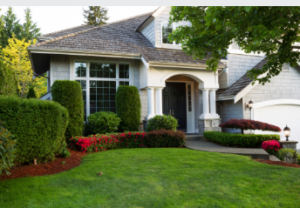Landscape design could be your ideal career if you appreciate lush and inviting gardens. Here are a few renowned landscape architects who have significantly contributed to rural and urban landscapes.
Top Landscape Designer Adelaide is primarily male-dominated; some remarkable female landscape architects have made a mark. We’ve gathered some of the most influential women in this field below.
Gertrude Jekyll
 Gertrude Jekyll was one of the most fabulous garden designers of the 20th century and an icon for English horticulture. With architect Sir Edwin Lutyens, she created over 100 gardens and wrote numerous books on gardening – including one dedicated solely to garden design.
Gertrude Jekyll was one of the most fabulous garden designers of the 20th century and an icon for English horticulture. With architect Sir Edwin Lutyens, she created over 100 gardens and wrote numerous books on gardening – including one dedicated solely to garden design.
Gertrude was an accomplished polymath and highly creative individual with an affinity for nature. She passionately studied and practised various applied arts such as painting, embroidery, wood-inlaying, and photography.
She was an enthusiastic supporter of the Arts and Crafts Movement, being familiar with artists such as J. M. W. Turner. This exposure to artists helped her cultivate her artistic style more naturally. Furthermore, she learned traditional techniques like carpentry and metalworking from experienced artisans.
Despite her failing eyesight, she never lost her passion for art and created numerous paintings and illustrations of gardens. Additionally, she had a keen interest in plants; she even grew some of them herself!
Her work was featured in several books and journals, and she sent many of her finest plants to the Royal Horticultural Society (RHS) for its monthly London shows. Although Munstead House and Munstead Wood were her signature creations, she continued to work on other projects throughout her lifetime.
In the early 1890s, her mother passed away, and she moved from Bramley House to Munstead Heath, a village near Godalming in Surrey. There, she began designing gardens with help from William Robinson – editor of The Garden magazine and champion of naturalistic designs instead of Victorian garden style.
She collaborated with Lutyens and introduced softness and rhythm into their designs by fusing their architectural skeletons with local forms and colours she had encountered during her travels. It resulted in an innovative form of garden design that wasn’t only beautiful and functional.
Throughout her lifetime, she designed and created numerous gardens, advised on more than 350 projects, and wrote numerous articles and books for general-interest publications. Her writings and designs were so influential that they remain popular today.
Louis Benech
For a more casual atmosphere, he added low-broad hedges or “slabs” of chartreuse foliage that echo the sandstone walls of the chateau. Additionally, he created a “ford” made out of sandstone blocks to direct water across the lawn.
The result is a garden that appears to have grown organically, requiring minimal upkeep and remaining visually pleasing for decades.
Benech has a knack for plant selection that allows him to incorporate symmetry into gardens – an element that may be overlooked in some designs but which studies have demonstrated has an immense visual impact.
Top Landscape Designer Adelaide is an expert at including plant blooming at specific intervals in his designs. It can be especially beneficial when rehabilitating an older garden, such as New Orleans, where you might plant tulips, roses and artichokes – all of which will thrive and bloom at various times of the year.
Janice Zewde
Many practitioners specialise in a single project, but Zewde takes an integrated approach to designing cities and communities that incorporates cultural memory, storytelling and craft into her multidisciplinary practice. She believes landscape design can convey an environment’s identity through plantings, architecture or public art while engaging more significant societal questions about culture, equity and sustainability.
Her initial research focused on urbanism in Africa, but she has focused on how narratives of place can shape a built environment and how those places are used. She noticed how landscapes could reaffirm one’s societal position or elicit joy or grief. This realisation led her to explore the potential of landscapes as agents for social and environmental transformation, which ultimately formed the basis of her thesis on black urbanism.